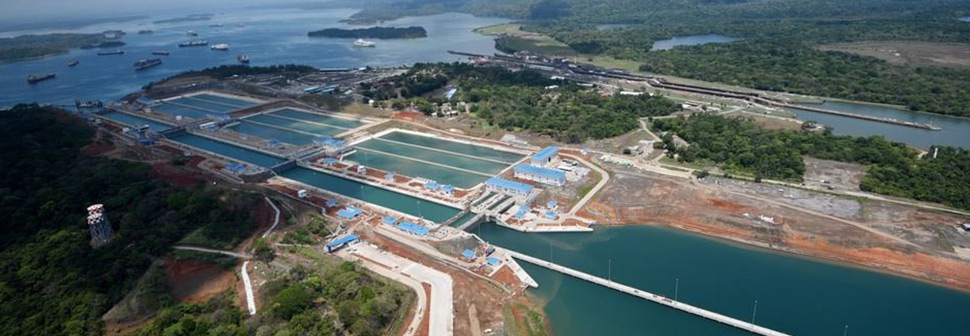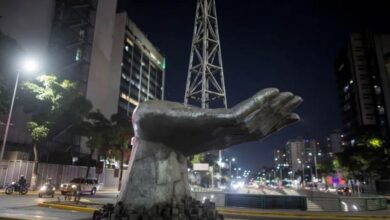Panama Canal: one year on


The expanded Panama Canal has seen a fast deployment of container services in spite of expectations that the uptake would be slow – and it is on course to hit 15 million teu this fiscal year compared with 12 million teu last year.
Panama Canal Authority vice president of planning and business development Oscar Bazán told Container Shipping & Trade: “We budgeted an overall 399 million tonnes for the fiscal year 2017. In our revision last month we estimated 397 million tonnes, so it is very close to budget. Fifty one per cent of this belongs to the container segment.”
This figure reflects the fact that the predominant market segment for the Panama Canal is container shipping. The last couple of years have been extremely difficult for this sector, something that would be expected to have an impact on the Panama Canal. Indeed, Mr Bazán highlighted how closely linked the two are. “When things are good for the industry, things are good for the canal. When they are not so good, the canal reflects this. We are very sensitive to what is happening in the market.”
It is not surprising, therefore, that the authority expected the deployment of services on the canal to be fairly slow. But despite the difficult economic climate, the new services that have been launched have surpassed its expectations.
Mr Bazán explained: “The last two years have been very difficult for the container industry so when we estimated the number of services we expected slow deployment. But we have seen fast deployment since 1 October 2016. We expected two new services but now we have four, all recaptured from the Suez Canal.”
He explained that these services migrated to the Suez Canal from 2010 because the Panama Canal could not accommodate the larger vessels that were coming IGNORE INTO service. Now that it has been expanded to allow the passage of bigger ships, the slings have returned.
The Panama Canal has a total of 14 box ship services, covering routes from the East Coast of the USA to Asia, the USA to Europe, Asia to the Caribbean and South America’s West Coast to Europe.
The jump in capacity transiting the canal from 12 million teu last year to an expected 15 million teu this year is down to a larger average vessel size of 8,500 teu. Last year this was 7,000 teu. “We expect the size to grow, especially in the last quarter of this year, as the Ocean Alliance will transit 13,000 teu vessels through the Panama Canal,” Mr Bazán said.
Other than this, the Panama Canal Authority does not expect to add any new services in the coming months, due to the realignment of the alliances and the fact that they have already announced their new strings. “Because of this, we do not expect any more new services between May and September,” he explained.
Since its expansion, the Panama Canal has reached new markets, accessing seven US states via the Mississippi River for the first time. “With economies of scale, we have gained new territory,” Mr Bazán said.
Asked about the Panama Canal Authority’s strategy, he said: “Our pricing is designed to attract volume. We are going after volume, so we are playing the market a little.”
Indeed, the whole issue of cost is crucial when it comes to winning container ship business – and also when it comes to the canal winning business from US West Coast ports. “Everything is to do with costs. If costs indicate that the canal is cheaper than the intermodal system, then carriers will opt for the cheaper route. It is the cargo that decides which route to use. At this point, yes, we are competitive.”
One of the authority’s main strategies is to build a new container terminal on the east side of the canal, near the Pacific entrance. The new terminal will be built in two phases. The first will have capacity for 3.2 million teu, to accommodate neo Panamax vessels. The second phase will add another 2.1 million teu, leading to a total of 5.3 million teu. Four terminals have pre-qualified to bid on the proposed container terminal at the port of Corozal.
Explaining why the terminal is needed, Mr Bazán said: “There is limited capacity on the Pacific side of the canal, so by expanding capacity we have more options available to carriers. Consolidation of transshipment is the best solution for them on the Pacific side. The advantage of having a relay terminal is that they can do relay over the Pacific and also for the Atlantic side.”
Indeed 85 per cent of cargo is relayed over the canal, so there is a clear need for more capacity.
“The last two years have been very difficult for the container industry so when we estimated the number of services we expected slow deployment. But we have seen fast deployment.” Oscar Bazán, Panama Canal Authority
But there has been a slight hitch to this plan. None of the pre-qualified four companies have yet submitted proposals, according to Mr Bazán. Because of this, the authority’s board is planning to re-evaluate the process and look at why proposals have not been forthcoming. It may also ask other terminal operators to submit proposals.
Commenting on this situation, Mr Bazán said: “There are several factors in play. The industry did not have a good year last year, market conditions are not at the right point, and there are local factors. This is why we are evaluating the whole process.”
Ports serving the Panama Canal have enjoyed good cargo growth since the start of the year. Ports including Evergreen subsidiary Colon Container Terminal and SSA Marine’s Manzanillo International Terminal, both on the Atlantic side, have outperformed themselves in terms of cargo traffic in the first quarter of the year.
Mr Bazán said: “I foresee that, in terms of capacity, there will be a shortage mainly on the Pacific side. But PSA Panama International Terminal on the west bank of the canal opposite Panama City is expanding capacity and is able to accommodate neo Panamax vessels.”
Like the rest of the industry, the Panama Canal Authority is waiting to see what impact the new alliance formations will have. “We are waiting to see how the three new alliances work. A lot of carriers are waiting to see how the market evolves before they respond. We do not anticipate many changes to the services using the Panama Canal in the last two quarters of this year.”
An area of growth singled out by Mr Bazán is the feeder sector. The Panama Canal currently has 29 feeder services, 10 on the Pacific side and 19 on the Atlantic side. The average Pacific feeder vessel using the canal is 2,500 teu, while vessels carrying out transshipment are 4,700 teu. “This gives enough strength to the route. The feedering trade lanes using the Panama Canal are very important, as right now we have over 1,000 neo Panamax transiting the canal, which are mainly container-related.”
View from the other side
“We have not seen any impact whatsoever from the expanded Panama Canal. We think that any shift has already taken place, years ago, in anticipation of the opening of the expanded locks. When the Panama Canal Authority announced plans to expand, the environment in the shipping industry was very different. Ships were half the size and changes since then in the shipping industry have altered the dynamics. At Long Beach we have 14,000 teu and 13,000 teu vessels call regularly that are too big to transit the expanded locks. So change and circumstances have muted, to some degree, the impact of the expanded canal.”
Noel Hacegaba, Port of Long Beach chief commercial officer
Panama Canal countdown
397 million tonnes
Forecast Panama Canal 2017 volumes
51%
The percentage of overall volumes belonging to the box sector
25%
The expected difference between capacity transiting the canal in 2016 and 2017
8,500 teu
The larger average size of vessel compared to 2016
Rebecca Moore |





